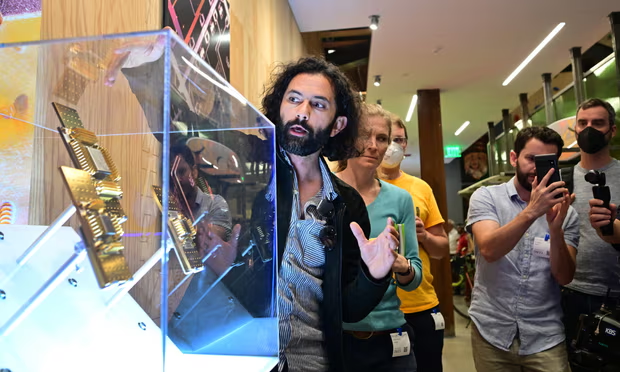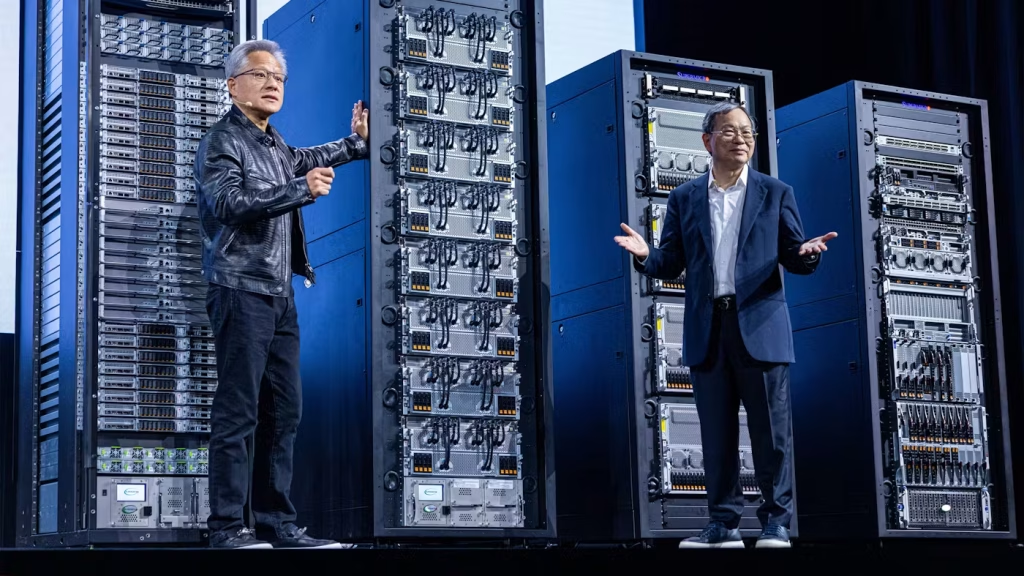Google’s breakthrough Willow chip means we’ll get useful quantum computers sooner than some people feared

Google has unveiled its breakthrough quantum computing chip, Willow, marking a significant step forward in the development of practical quantum computers. This new chip promises to accelerate the timeline for achieving quantum computing that is not only functional but also useful in real-world applications. With the potential to solve problems far beyond the capability of classical computers, Willow has set the stage for a future where quantum computing could revolutionize industries like pharmaceuticals, finance, and artificial intelligence.
What is the Willow Chip?
Willow is the latest in a series of quantum chips developed by Google’s quantum computing division, which is part of the company’s broader effort to push the boundaries of quantum technology. Unlike traditional classical computers, which process information using bits that exist in a state of 0 or 1, quantum computers use quantum bits, or qubits, which can exist in multiple states simultaneously due to the principles of quantum mechanics, particularly superposition and entanglement.
The Willow chip is designed to tackle some of the most challenging technical issues that have slowed the progress of quantum computing. One of these challenges is the stability of qubits. Quantum systems are notoriously delicate, and even the slightest disturbance can cause qubits to lose their quantum state, rendering them unreliable for computation. Willow features a more stable qubit design, along with improved error correction protocols, which makes the chip more reliable and efficient than its predecessors.
Accelerating the Timeline for Practical Quantum Computing
Quantum computers have long been a subject of research, with experts predicting that they could transform everything from material science to cryptography. However, the development of practical quantum systems that can outperform classical computers has been a significant hurdle. Many had feared that it would take decades before quantum computers were robust enough to deliver tangible, everyday benefits.
Willow is a game-changer because it promises to accelerate the timeline to practical quantum computing. Google’s quantum computing division believes that Willow’s design will help bridge the gap between the theoretical potential of quantum computing and real-world applications. While fully functional, large-scale quantum computers are still a few years away, Willow brings that future closer, with the chip’s performance marking a crucial milestone in demonstrating the feasibility of quantum algorithms for complex tasks.
Breaking Through the Quantum Computing Barrier
Quantum computing has long been seen as the next frontier in technology. The power of quantum computers lies in their ability to process and analyze vast amounts of data at once, solving problems that are practically impossible for classical computers. From simulating molecular interactions for drug development to optimizing supply chains or enhancing artificial intelligence, quantum computing holds the potential to disrupt a variety of industries.
However, the challenge with quantum computing has always been creating a chip that can perform reliable computations. Previous efforts in quantum computing were plagued by problems such as “quantum decoherence,” where qubits lose their quantum state due to environmental factors like temperature changes or electromagnetic interference. Willow’s new design, which improves qubit stability and error correction, addresses these problems and paves the way for scalable quantum computing systems.
Google’s Role in the Quantum Race
Google’s breakthrough with Willow comes after years of research and development in the quantum computing space. The company has been at the forefront of quantum computing efforts, making headlines in 2019 with its “quantum supremacy” achievement. In this landmark experiment, Google’s quantum computer, Sycamore, successfully performed a complex calculation that would have taken the most advanced classical supercomputers thousands of years to complete. This achievement was seen as a key milestone, demonstrating the potential of quantum computing.
With Willow, Google has made another major leap, moving beyond theoretical demonstrations to create a chip that could soon be used for practical quantum computations. This will likely encourage further investment and research into quantum technologies, not only from tech giants like IBM and Microsoft but also from governments and research institutions around the world.
Implications for Industry and Research
The practical applications of quantum computing are vast, and Willow’s development could significantly impact industries ranging from healthcare to energy. One of the areas where quantum computing is expected to have the most immediate impact is drug discovery. Quantum computers are particularly well-suited to simulate molecular structures and reactions, a task that is extremely difficult for classical computers. This could lead to the development of new materials, medicines, and chemical processes that are more efficient or entirely new.
In finance, quantum computing could revolutionize risk modeling, fraud detection, and optimization of investment portfolios. Quantum algorithms could process complex financial data more efficiently, uncovering patterns and insights that are impossible for classical systems to detect. In cybersecurity, the advent of powerful quantum computers could render current encryption methods obsolete, making it crucial for industries to develop new, quantum-resistant cryptographic techniques.
Artificial intelligence (AI) could also benefit from quantum computing. By harnessing quantum algorithms, AI systems could process vast amounts of data much faster and more accurately, leading to advancements in machine learning, natural language processing, and computer vision.
While Willow represents a significant step forward, it is important to note that we are still in the early stages of quantum computing development. The chip itself is not yet capable of performing complex, industry-changing tasks on its own, and scaling up quantum systems remains a challenge. Researchers still need to improve quantum coherence times, reduce error rates, and find efficient ways to scale up qubit numbers while maintaining stability.
Nonetheless, the Willow chip is a critical advancement that signals the growing potential of quantum computing. As companies like Google, IBM, and others continue to refine their quantum systems, the path to practical, useful quantum computers is becoming clearer. With Willow, Google has demonstrated that we may see meaningful applications of quantum computing sooner than originally expected, pushing the boundaries of what is possible in computing and opening up new frontiers in science and industry.
Google’s Willow chip marks a significant milestone in the quest for practical quantum computing. By improving the stability and error correction of qubits, Willow brings us closer to a future where quantum computers can solve problems that are beyond the capabilities of classical systems. While there is still work to be done, the progress represented by Willow shows that the era of practical quantum computing may arrive sooner than many anticipated. As technology continues to evolve, it holds the potential to transform industries, accelerate scientific discovery, and drive innovations we can only begin to imagine.






